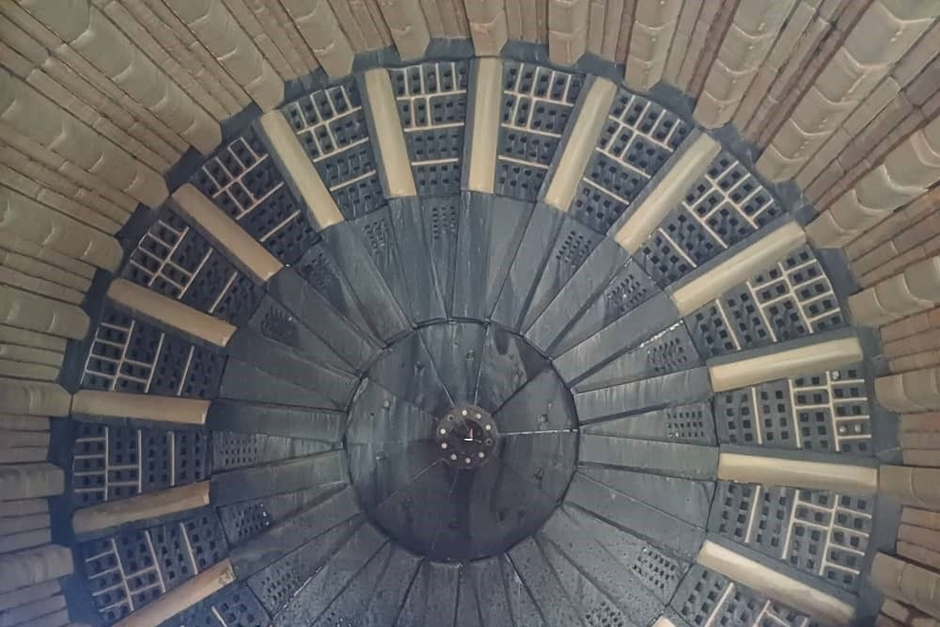Multotec says it has successfully supplied scientifically engineered rubber mill and scrubber liners to mining operations across the globe, including the USA, Zambia, Ivory Coast, Botswana, Namibia and South Africa for various customers in the diamond, PGM, iron ore, zinc, lead, copper, gold and coal processing industries.
These liners were developed using advanced computer simulations to ensure optimal configuration for efficient performance and have been implemented in mills, chutes and plants.
Multotec demonstrated the power of 3D scanning technology during a mill liner installation at a gold processing facility in Alaska, marking the first time it used this technology to support an installation, the company says. This approach enabled precise fitting and optimised liner performance.
The company explained: “Multotec places a strong emphasis on ensuring that its liner design is optimal for the life of the liners and performance. The company also conducts condition monitoring on installed liners to ensure maximised uptime by facilitating proactive maintenance.”
Ralph Hollenstein, Senior Mechanical Engineer at Multotec, noted: “In this case, the client supplied us with 3D scans of the mills, allowing us to design the liners remotely, creating shorter turnaround times and greater accuracy. The liners were then designed, manufactured, and fitted perfectly in the mill.”
Multotec says it adopts a scientific approach in its mill liner design, focusing on process flow and charge trajectories to enhance both performance and durability of the liners. By using advanced modelling techniques, Multotec provides mill operators with precise guidelines to keep the mill operating in its optimal regime.
As part of the design process, Multotec uses the discrete element method (DEM) to predict the behaviour of the mill charge − comprising ore and grinding media − and the performance of the mill throughout the lifespan of the lifter. DEM is also employed to predict liner wear and the evolution of the liner profile over time.
“This technology enables us to simulate wear on the liners and track how the material interacts with the changing liner profile as it wears down,” Hollenstein explains. “From these wear simulations, we can identify areas of high wear within the mill and use this information to optimise the liner design – adding material in high-wear zones while reducing material in areas that don’t require as much reinforcement.”
Multotec’s liner optimisation system integrates advanced tools, including MillTraj (a first order simulation tool), DEM (for advanced multiparticle simulation) and 3D scanning technology for mill liners. These tools enable precise condition monitoring, comprehensive management and effective liner design for enhanced performance.
MillTraj focuses on the trajectory modelling of grinding mill liners and lifters. Its key applications include:
- Simulating lifter designs and configurations to understand their impact on the motion of the grinding charge (balls and material) inside mill;
- Optimising mill liner profiles to improve grinding efficiency and reduce wear; and
- Providing insights into the trajectory of grinding media to ensure optimal energy transfer and to avoid damaging the mill shell.
Furthermore, Rocky DEM offers extensive capabilities for simulating particle dynamics across various industrial processes. Its functionalities include:
- Simulating particle dynamics such as collisions, breakage and flow for a range of material types;
- Modelling and optimising equipment like mills, crushers, conveyors and screens to improve performance;
- Conducting wear analysis to predict and mitigate component degradation, ensuring longer equipment life; and
- Handling complex particle shapes, providing more accurate simulations for irregular materials.
Multotec says it employs advanced 3D laser scanning technology to accurately assess mill liner wear. This data-driven approach allows the company to create precise liner replacement schedules and estimate the remaining lifespan of the mill liners, ensuring efficient relining operations.
“The 3D scanning is a service we provide to our customers for condition monitoring in various countries and across multiple commodities. In some cases, customers use similar scanners to perform the scans themselves,” Hollenstein says. “They then send us the scan data, and we then interpret the results and generate detailed reports.”
Additionally, what sets Multotec apart from its competitors is its focus on the entire comminution circuit as a whole rather than just mill liner design, the company says, adding that this ties in with conducting plant audits to assist customers to optimise their efficiency.
Hollenstein concluded: “When we work with customers, we don’t simply sell them mill liners. We take a more holistic approach by helping them to assess and identify any problem areas and work with the entire plant/milling circuit to resolve those issues. Through plant audits, we gain an understanding of the customer’s operational constraints and where they want to improve their operations.”
Additionally, the company also offers ongoing condition monitoring services to further enhance plant performance and efficiency.
The post Multotec’s ‘scientifically engineered’ liners taking hold in mineral processing space appeared first on International Mining.

